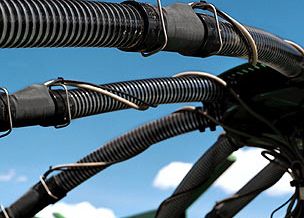OK, call me stupid, but I bought a Deere 1830 drill and a Case Air Cart. Now I am trying to get the Deere Blockage Monitors to be read by the Pro 700 display. When I plug the drill in to the back of the cart, the 700 knows there is John Deere Product Flow Sensors back there, but gives a Pool Validation Error.
I was told an update to Deere Version 9 software might fix the problem, but so far my Dealer can't figure out how to get the software installed.
Any body else been dumb enough to try and mix colors?
I was told an update to Deere Version 9 software might fix the problem, but so far my Dealer can't figure out how to get the software installed.
Any body else been dumb enough to try and mix colors?






